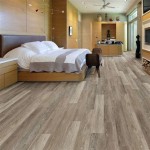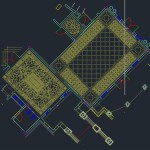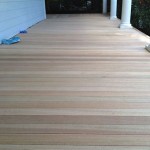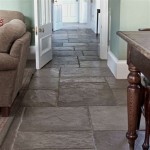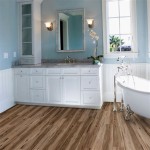Snap Lock Laminate Flooring Cost: A Comprehensive Guide
Snap lock laminate flooring, also known as click-lock or interlocking laminate, has gained significant popularity as a cost-effective and relatively easy-to-install flooring option. Its appeal stems from its floating installation method, which removes the need for adhesives and significantly reduces installation time compared to traditional flooring materials like hardwood or tile. However, understanding the overall cost associated with snap lock laminate flooring requires a thorough analysis of various factors, including material costs, installation expenses, and potential hidden costs.
This article aims to provide a comprehensive overview of the costs associated with snap lock laminate flooring, enabling homeowners and property managers to make informed decisions. We will delve into the different grades of laminate, the variables affecting installation costs, and other expenses that can contribute to the final project budget.
Understanding the Components of Snap Lock Laminate Flooring Cost
The total cost of a snap lock laminate flooring project is comprised of several key components. These can be broadly categorized as materials, installation, and ancillary expenses.
Material Costs: The price of the laminate flooring itself is a fundamental element of the overall cost. Laminate flooring is generally priced per square foot, and the cost varies significantly based on the quality, thickness, design, and brand. Thicker laminates, often with higher AC (Abrasion Class) ratings, which indicate durability and resistance to wear, tend to be more expensive. Moreover, realistic wood grain textures and intricate patterns can also increase the price per square foot. It's crucial to select a laminate grade appropriate for the intended use. High-traffic areas, such as entryways and kitchens, require more durable options than bedrooms or less frequently used spaces.
Lower-end laminate options may cost around $1 to $2 per square foot. These are often suitable for low-traffic areas or temporary flooring solutions. Mid-range laminates, offering a balance of durability and aesthetics, typically range from $2 to $4 per square foot. High-end laminates, designed for heavy foot traffic and offering exceptional realism and resistance to scratches and water, can range from $4 to $8 or more per square foot. Speciality laminates, such as those designed to mimic exotic woods or featuring unique textures, may exceed this range.
Installation Costs: One of the primary advantages of snap lock laminate flooring is its relatively straightforward installation. However, while many homeowners opt for DIY installation, professional installation is often recommended to ensure proper fitting and a long-lasting, aesthetically pleasing result. The cost of professional installation varies depending on several factors, including the complexity of the room layout, the condition of the subfloor, and the geographic location. Installation costs are typically calculated per square foot.
Professional installation costs generally range from $1 to $4 per square foot. This can vary widely based on the installer's experience, the complexity of the project, and regional labor rates. Preparing the subfloor, which may involve leveling, repairing cracks, or installing an underlayment, can also add to the installation cost.
Ancillary Expenses: Beyond the laminate flooring and installation costs, several other expenses can contribute to the total project budget. These include underlayment, molding, trim, and tools (if opting for DIY installation).
Underlayment is a thin layer of material placed between the subfloor and the laminate flooring. It provides cushioning, reduces noise transmission, and can act as a moisture barrier. While some laminate flooring options come with pre-attached underlayment, separate underlayment is often necessary, particularly for concrete subfloors or in areas prone to moisture. Underlayment costs typically range from $0.20 to $0.80 per square foot, depending on the type and thickness.
Molding and trim are used to cover expansion gaps around the perimeter of the room and to provide a finished look. Common types of molding include baseboards, quarter round, and transition strips. The cost of molding and trim varies depending on the material and profile. Expect to pay between $1 and $5 per linear foot for these materials.
If opting for DIY installation, you will need tools such as a tapping block, pull bar, measuring tape, saw, and safety glasses. These tools can be purchased individually or as part of a laminate flooring installation kit. The cost of these tools can range from $50 to $200, depending on the quality and quantity of items.
Factors Influencing Snap Lock Laminate Flooring Costs
Several factors can significantly influence the overall cost of a snap lock laminate flooring project. Understanding these factors allows for more accurate budgeting and cost management.
Subfloor Condition: The condition of the subfloor is a critical factor affecting both installation costs and the longevity of the laminate flooring. A subfloor that is uneven, damaged, or contaminated with moisture must be properly prepared before installing the laminate. This preparation can involve leveling compounds, patching cracks, or installing a moisture barrier. Subfloor preparation can add significantly to the overall cost, particularly if extensive repairs are required.
Room Complexity: The complexity of the room layout can also influence installation costs. Rooms with numerous corners, doorways, or built-in fixtures require more intricate cutting and fitting, increasing the labor time and potentially the amount of material wasted. Rooms with non-rectangular shapes or curved walls can also be more challenging and expensive to install laminate flooring in.
Laminate Quality and Features: As mentioned earlier, the quality and features of the laminate flooring itself play a significant role in determining the material cost. Laminates with higher AC ratings, realistic textures, and enhanced water resistance generally command a higher price. Choosing a laminate grade appropriate for the intended use is crucial to balancing cost and performance. For example, a bathroom or kitchen requires a water-resistant laminate, while a bedroom may be suitable for a less expensive, less durable option.
Geographic Location: Labor rates and material costs can vary significantly depending on the geographic location. Areas with higher costs of living tend to have higher labor rates for professional installation. Similarly, the availability and price of specific laminate flooring brands and materials can vary from region to region.
DIY vs. Professional Installation: While DIY installation can save on labor costs, it requires time, skill, and the right tools. Incorrect installation can lead to problems such as gapping, buckling, or uneven surfaces, which can ultimately be more costly to repair than hiring a professional in the first place. If you lack experience with flooring installation or are unsure about tackling a complex project, professional installation is generally the better option.
Hidden Costs and Budgeting Considerations
When planning a snap lock laminate flooring project, it's essential to account for potential hidden costs and to create a realistic budget. Unexpected expenses can quickly derail a project and lead to financial stress.
Waste Factor: Laminate flooring installations typically involve some degree of waste due to cutting and fitting. It's advisable to factor in a waste factor of 5-10% when calculating the amount of material needed. This ensures that you have enough flooring to complete the project without running short.
Furniture Removal and Replacement: Moving furniture out of the room before installation and replacing it afterward can be time-consuming and physically demanding. If you are unable or unwilling to move the furniture yourself, you may need to hire movers, adding to the overall cost.
Existing Flooring Removal and Disposal: If you are replacing existing flooring, you will need to remove and dispose of it. This can involve additional labor costs and disposal fees. Some installers may include flooring removal as part of their installation service, while others may charge extra for it.
Unexpected Subfloor Issues: Even with a thorough inspection before starting the project, unexpected subfloor issues can arise during installation. For example, you may discover hidden damage or moisture problems that require immediate attention. It's a good idea to set aside a contingency fund to cover such unexpected expenses.
Additional Tools and Supplies: Even if you have some basic tools, you may need to purchase additional tools or supplies during the installation process. For example, you may need specialized cutting tools, adhesives, or cleaning products. It's wise to have a small budget for these miscellaneous expenses.
By carefully considering all of these factors and creating a detailed budget, you can minimize the risk of unexpected costs and ensure that your snap lock laminate flooring project is completed successfully and within your financial means.

Cost To Install Laminate Flooring In 2024 Forbes Home

2024 Laminate Flooring Installation Cost Fixr

2024 Laminate Flooring Installation Cost Guide Angi

How Much Does Laminate Flooring Installation Cost 2024

2024 Laminate Flooring Installation Cost Guide Angi

How Much Does It Cost To Install Laminate Flooring Homeserve Usa

8mm Anti Slip Snap Lock Wood And Stone Laminate Flooring China Waterproof German Technology Made In Com

Vinyl Vs Laminate Flooring Pros Cons And Differences Forbes Home

Laminate Flooring Installation 2024 Cost Guide Modernize

Lock Vinyl Plank Flooring A Comprehensive Guide Floorings
Related Posts

